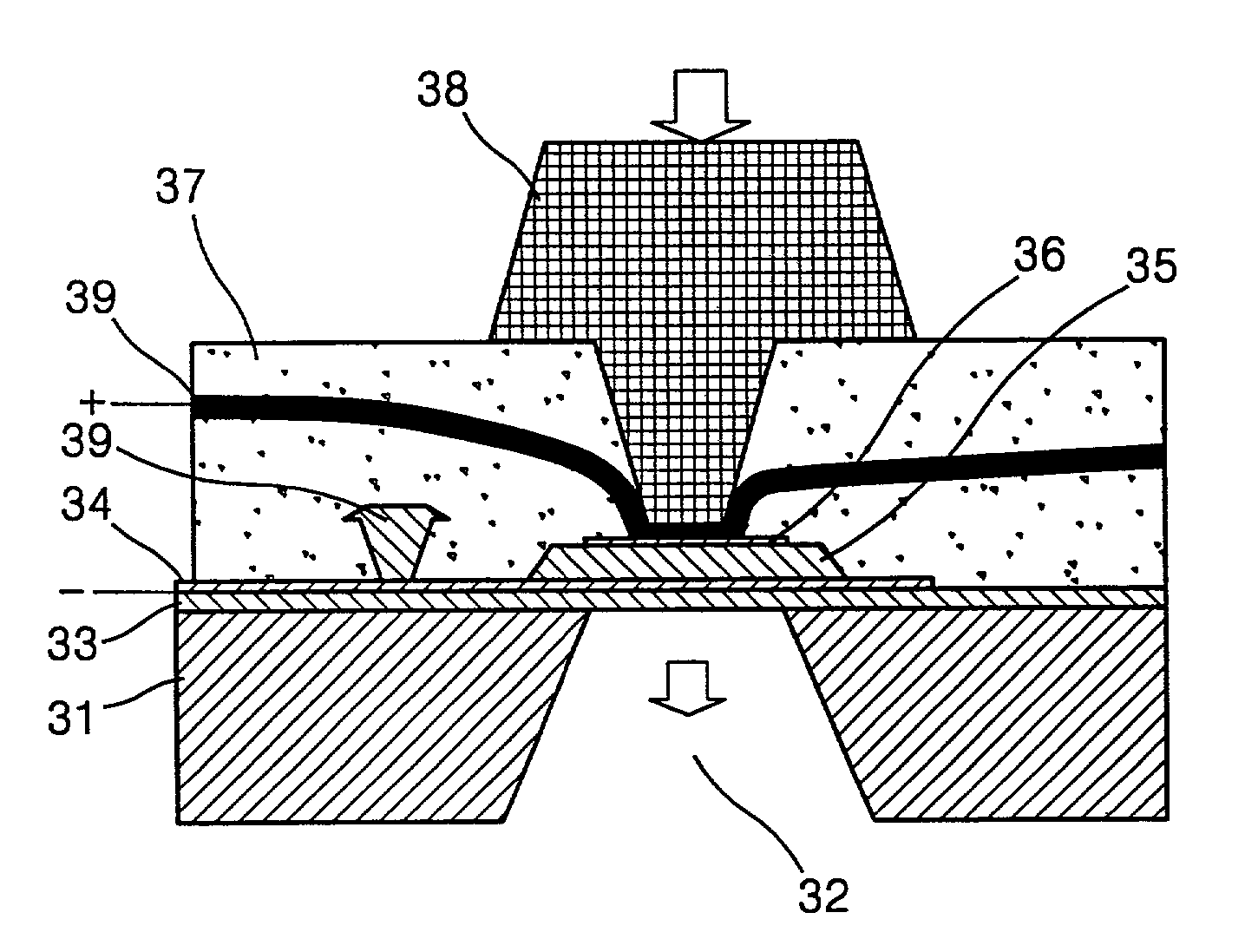Fingerprint sensor using a piezoelectric membrane
a piezoelectric membrane and fingerprint sensor technology, applied in the direction of person identification, instruments, generators/motors, etc., can solve the problems of difficult to manufacture the fingerprint sensor as a one-chip type, difficult to precisely measure information, and difficult to achieve the effect of simple applications to portable systems
- Summary
- Abstract
- Description
- Claims
- Application Information
AI Technical Summary
Benefits of technology
Problems solved by technology
Method used
Image
Examples
first embodiment
[0029]The structure of a unit piezoelectric device of a fingerprint sensor according to the present invention will be described with reference to FIG. 3.
[0030]A supporting layer 33 is formed on a substrate 31 in which a cavity 32 is formed. A lower electrode 34 is formed on the supporting layer 33. A piezoelectric membrane 35 is formed on a portion of the lower electrode 34 opposite the cavity 32. An upper electrode 36 is formed on the piezoelectric membrane 35. A pressuring portion 38 for applying pressure exerted by contact of a fingerprint of a finger is formed on the upper electrode 36. A non-conductive layer 37 is formed between the pressuring portion 38 and the lower electrode 34. A wiring 39 for transmitting current of the lower and upper electrodes 34 and 36 to the outside is formed in the non-conductive layer 37.
[0031]The supporting layer 33 is not necessary, but maintains elasticity against pressure from the pressuring portion 38 and supports the unit piezoelectric device ...
second embodiment
[0037]A fingerprint sensor according to the present invention will now be described with reference to FIG. 4.
[0038]As shown in FIG. 4, a supporting layer 43 is formed on a substrate 41 in which a cavity 42 is formed. A lower electrode 44 is formed on a predetermined portion of the supporting layer 43.
[0039]A piezoelectric membrane 45 is formed on a portion of the lower electrode 44 opposite the cavity 42. An upper electrode 46 is formed on the piezoelectric membrane 45. A pressuring portion 48 for applying pressure exerted by contact of a fingerprint of a finger is formed on the upper electrode 46. A non-conductive layer 47 is formed between the pressuring portion 48 and the lower electrode 44 and the supporting layer 43. A wiring 49 for transmitting current of the lower and upper electrodes 44 and 46 to the outside is formed in the non-conductive layer 47. Thus, the structure described in the second embodiment is highly similar to the structure described in the first embodiment.
[00...
PUM
 Login to View More
Login to View More Abstract
Description
Claims
Application Information
 Login to View More
Login to View More - R&D
- Intellectual Property
- Life Sciences
- Materials
- Tech Scout
- Unparalleled Data Quality
- Higher Quality Content
- 60% Fewer Hallucinations
Browse by: Latest US Patents, China's latest patents, Technical Efficacy Thesaurus, Application Domain, Technology Topic, Popular Technical Reports.
© 2025 PatSnap. All rights reserved.Legal|Privacy policy|Modern Slavery Act Transparency Statement|Sitemap|About US| Contact US: help@patsnap.com



